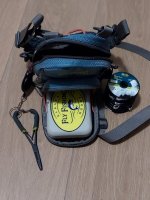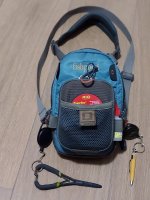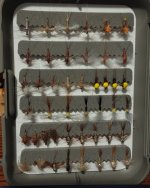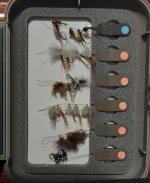Carrying different colored markers was a THING back in the 1980's that I decided to embrace in my first attempt to simplify things to reduce the number of flies I carried. For a short time when I wore a vest, I actually tied all of my dry flies WHITE and colored them as needed with fancy Chartpak permanent markers.
I stashed multiple markers in my vest in different shades of brown, olive, grey, yellow, orange & brown and I would take out the right color(s) and color a generic "white" fly of the correct size to match the naturals.
Well, first off permanent markers ain't so permanent...
This was in the days before Frog Fanny so my floatant of choice back then was this liquid Orvis stuff that came in a small bottle. Well after spending a minute or two coloring up my fly to fool an entomologist, I discovered that when I dipped it in the floatant, the solvent in the floatant washed away all of the color.

Later I discovered that the oils & acids in my skin & sweaty hands also removed some of the coloring so no matter what, I had olive/brown colored fingertips that made me look like a 5 pack a day cigarette smoker.
The only permanent thing about the markers is I still have most of them and they haven't dried out after decades of sitting tightly capped in the dumb idea bin in my basement.
Maybe the solvent in the markers made me lightheaded and delusional regarding this epiphany but that was the messiest and stupidest idea I ever came up with.









